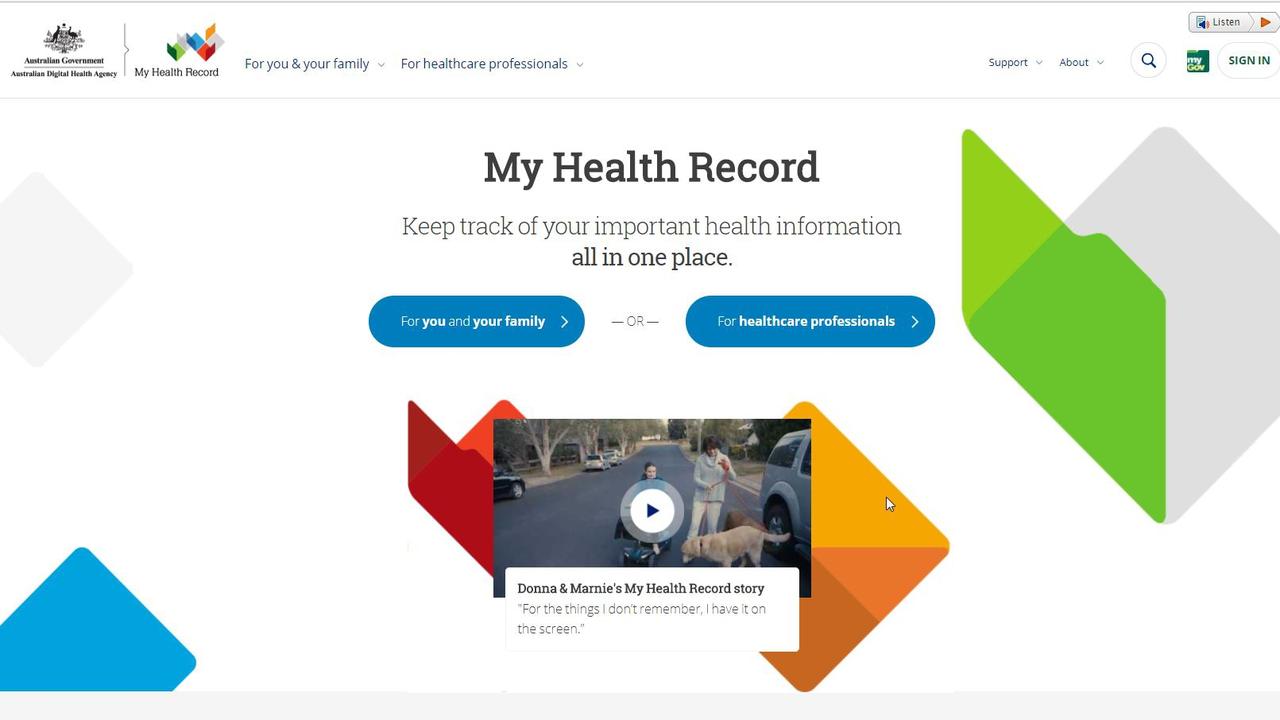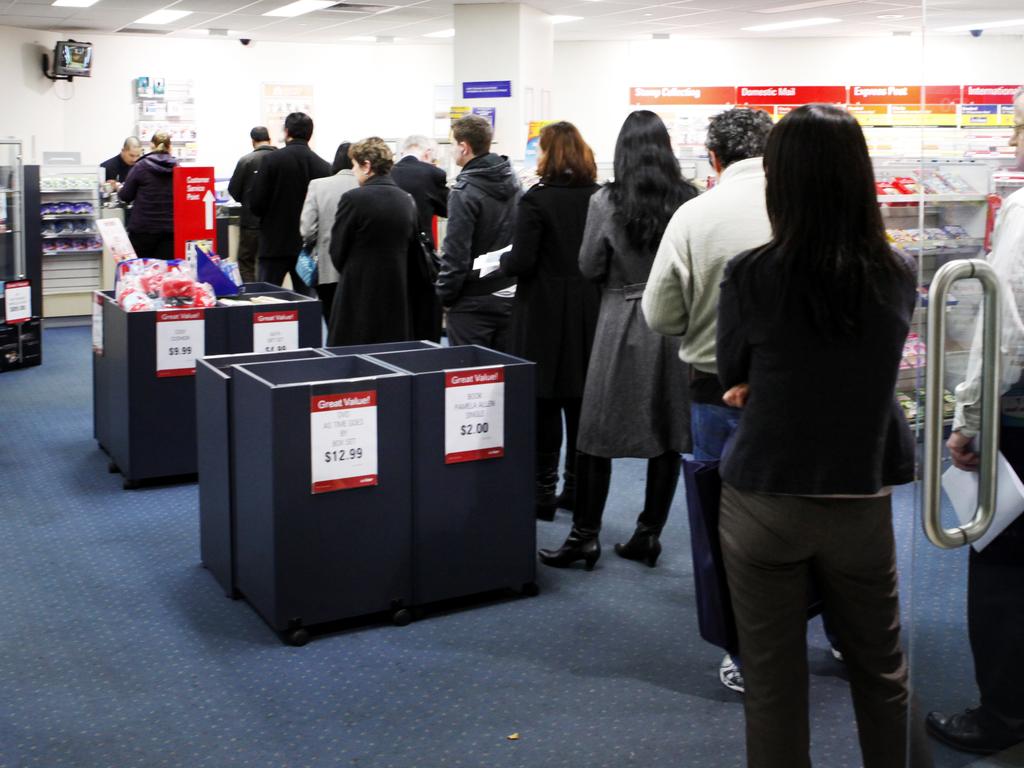National digital ID set to change the way we prove who we are
WE’RE spending so much time doing these mundane tasks and it’s costing us a fortune. But this could stop us wasting precious hours.
HOURS of waiting on the phone, lining up in queues and scanning and mailing all sorts of identification documents to prove who we are could soon be a thing of the past.
It’s a problem estimated to cost the Australian economy $11 billion each year due to time wasted, fraud and increased costs for business — and the Government thinks it has the solution.
Digital identity is about to be trialled across the country.
What that means is having a single point ID check that could theoretically be used across government services and, ultimately, for any service.
But while its rollout is still a fair way off, it is already being criticised.
Fergus Hanson, of the Australian Strategic Policy Institute, said there was a risk of a Western version of China’s social credit system that can effectively rank individuals and shape behaviour.
Mr Hanson’s scathing October report“Preventing Another Australia Card Fail” said the scheme was “set to cause controversy and risk further disempowering Australians in the absence of clearer policy and legislative controls”.
But other digital experts have labelled his view “alarmist” and “detached from reality” saying there is no Big Brother or honey pot of information to tap.
Digital Transformation Minister Michael Keenan launched the Government’s first pilot program on Wednesday and stressed Australians should have no concern about privacy or security.
The pilot will involve a test group that will be able to create a new myGovID and then get a Tax File Number in minutes instead of weeks.
The Government has invested $92 million to deliver the system that will ask for private sector involvement to create a “global solution” for verification checks when applying for things like loans.
“There’s no reason this can’t be the building block for a whole of economy solution to the digital economy,” Mr Keenan said.
But experts say for that to happen there needs to be a clear government and private sector approach that’s well communicated to the public and avoids another My Health Record “fail”.

WHERE WE COULD GO WRONG
Digital expert Professor Jeff Brand said one of the greatest failings of My Health Record was winning the hearts and minds of the public and explaining the benefits.
He said the system was more about promoting digital capitalism and prioritising business over digital health priorities and wellbeing.
The Bond University researcher said people were angry they could not opt in and not opt out.
“The problem we have right now is innovation is moving at a rapid pace and neither policy makers and individuals are able to assure security either in fact or perception,” he said.
“We are worried, and we should be, that as we move more and more information online, control over that information will be contested — our Government will always be worried about security and external entities will seek to exploit it.
“Everybody has a digital footprint and that footprint is held by multiple entities and just like any data it can be exploited.”
Boston Consulting Group (BCG) senior partner Miguel Carrasco, who has done extensive work in the digital public sector space, said the Government had not done a good job with My Health Record around the notion of receiving value and what the public got in return from the system.
There are already 14 million people who use myGov online services.
But Mr Carrasco said the challenge was around making digital identity for these services work in a country like Australia that was well behind others which already have national ID cards and unique identifiers.
“I think digital ID is a critical piece of infrastructure for the digital economy,” he said.
“I think it’s really important there is more awareness and communication about digital ID.
“It is a complex area. There’s an enormous hidden cost at the moment, a burden in transaction costs because we haven’t sorted this out.”

WHAT THE PEOPLE SAY
Mr Carrasco believes a digital ID is the way to go because BCG’s research had found 20 per cent of people had concerns about a single unique identifier issued by the Government.
There’s equally another 20 per cent of people who have a distrust or scepticism of the private sector and about 60 per cent who are indifferent, as long as it works.
“They have a distrust of government generally,” he said.
“In designing an ID scheme, what we found is you need to have public and private sector.”
Rebecca Russell is also from BCG and in recent years researched what was happening in the digital identity space.
“The research that we did still holds true, or is even more relevant,” she said.
“Speaking with Australians and small business, they were increasingly being pushed to interact online.
“In those transactions there needs to be a degree of trust. The forms of trust we have to prove who we are really paper-based.
“That increases friction and drop out, exposure to fraud and identity theft. A trustworthy, secure and convenient solution that allows you to prove who you are online will fundamentally change how we interact online.”
Ms Russell said while people wanted convenience, they wanted systems to be secure and did not want to be a number in a Big Brother system.
But the experts say the public perception of digital systems, security and privacy were concerning.

Ms Russell said people were concerned about security but would happily buy items through a Facebook group and would choose convenience in the moment.
Mr Carrasco said issues were around perception rather than reality.
“The ID service provider doesn’t have access to the underlying data, it sits securely in the systems of the organisations you’re dealing with,” he said.
“There’s a misunderstanding what an identity service provider has access to.”
Mr Brand said the reality was most consumers had not given digital security much thought and there needed to be more education in that space.
“The weakest link is probably at the individual and consumer level,” he said.
“It’s amazing how many people don’t realise what Google, their telecommunication company, Apple would have on them, which is pretty sad.
“The willingness for people to expose themselves is fundamentally inconsistent (with privacy concerns).”
THE ROLLOUT
Eight pilot programs will be run over the next nine months with selected users to ‘test’ how the system works for a range of services.
People will only need to set up their myGovID once and then will be able to use it as often as they want for services.
It involves downloading the app to your phone and providing your driver’s licence and passport details.
A real-time selfie will be cross-checked with that information before being deleted, and an ID is created.
Australians will be able to opt out and eventually have the option to create digital IDs through other providers such as banks and utilities.
Australia Post already has a digital ID system.
A broader public release will start next year.



